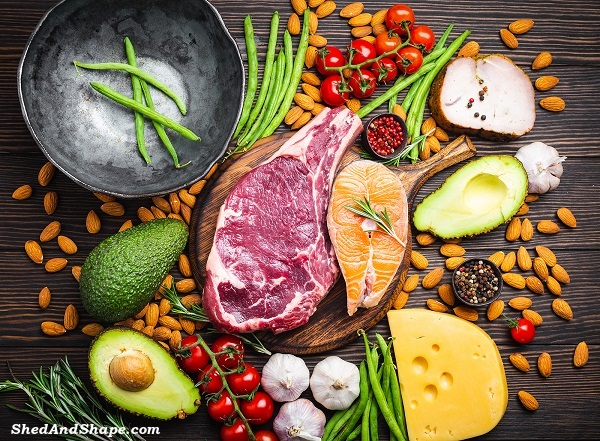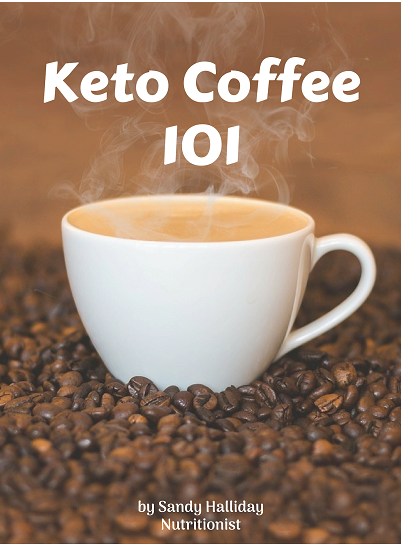Understanding the keto macros ratio is an essential part of your ketogenic diet. The ratio will serve as your guide on how much fats, carbs, and protein you should eat every day.
As you know, the keto diet is a high fat, low carb, and moderate protein diet that will put you into a metabolic state called ketosis. While in ketosis, your body will start to burn fats for fuel instead of carbs, and that’s when you start reaping the benefits of a keto diet, including weight loss.
Related reading: How Ketosis Works for Burning Fat Faster
But, remember that to reach ketosis, you must understand the proper keto macros ratio. So, read on to learn more about the keto macros ratio and other important things you need to know to achieve fat loss on keto.
What Are Macronutrients?
Macros refer to “macronutrients”, which are the three building blocks that make up human foods. The three macronutrients are carbohydrates, protein, and fats, each serving a specific purpose and benefit for your body.
Carbohydrates
When people think of carbs, they immediately associate them with fuel or energy. That’s because when we consume carbohydrates, they get broken down into glucose, which our body will use for energy. But this is not the case if you’re in ketosis. Instead of carbs, your body will turn to fats for energy.
Related reading: When To Eat Carbs For Weight Loss?
Carbohydrates are present in fruits, vegetables, grains, starches, and most processed foods. To achieve ketosis, followers of the keto diet must strictly limit their carb consumption.
Related reading: How Many Carbs Do You Need To Eat To Lose Weight?
Protein
Protein is broken into amino acids that the body will use for building muscles, hair, growth and repair. It also plays a significant role in producing hormones, enzymes, and some other body chemicals.
For keto, some of the best protein sources are animal products like grass-fed beef, wild caught fish, organic/pastured eggs, and good quality dairy products.
Fats
Fats help to keep the brain and nervous system healthy. In a typical keto macros ratio, fats make up about 70%.
The main concept of the keto diet is to eat significant amounts of healthy fats in exchange for carbs. In doing so, your body will enter the state of ketosis, where it starts using fats as your primary source of fuel.
Related reading: Benefits of Fat for the Keto Diet
Understanding Keto Macros Ratio to Achieve Fat Loss
You have probably heard about the keto macros ratio several times, but you’re not exactly sure what it is and how it can help with your keto diet. It’s basically the ratio of the macronutrients you need to eat daily.
Related reading: What is a Macro Diet? Does it Work For Weight Loss?
While most diets work by cutting down calories to achieve weight loss, the keto diet works differently. What it does is change the way your body uses energy, and the only way to achieve this is by religiously following the keto macros ratio.
The typical keto macros ratio is the following – 75% fat, 20% protein and 5% carbohydrates.
Related reading: How to Calculate Macros for Weight Loss
It’s worth noting that the keto diet is not just any low carb plan. It is different from the other low carb diets, such as the Paleo Diet, which encourages eating a lot of protein.
Related reading:Low Carb Diet Versus Keto
According to Pam Nisevich Bede, M.S., R.D., registered dietitian,
“The keto diet is really different from other low-carbohydrate diets that allow higher intakes of protein. “After we digest and absorb protein, our bodies can convert it to glucose if needed. If you eat too much protein while on the keto diet, you may not be able to reach or maintain ketosis.”
Tracking Macros While on Keto
For many, reaching ketosis can be a challenge. We are used to eating carbs most of our lives, so it’s not that easy to eliminate them from our diet. It could take several weeks before our body can fully adapt to the ketogenic lifestyle.
And once you have already adjusted to the diet, make sure you stick to the plan. Otherwise, all your efforts will go to waste.
It’s therefore important that you keep track of your macros. You need to know how much of these macronutrients you eat daily to ensure that you are eating them according to the keto macros ratio. The two most effective ways to keep track of your macros are using a macros tracker app and keeping a food journal.
Related reading: Lumen Metabolism Tracker Review
![]() You will find a lot of macros tracker apps online. They all serve one purpose – to show you the macronutrients percentage from the food you have eaten in a day. Some apps even go a step further, allowing you to monitor your weight loss progress over time. Others will offer tips on planning healthy meals and will include keto-friendly recipes.
You will find a lot of macros tracker apps online. They all serve one purpose – to show you the macronutrients percentage from the food you have eaten in a day. Some apps even go a step further, allowing you to monitor your weight loss progress over time. Others will offer tips on planning healthy meals and will include keto-friendly recipes.
Food journaling is also another way to keep track of your macronutrients daily. It requires some work, but it’s an equally effective means of tracking your keto macros ratio. For this, you need to refer to the information found on the nutrition labels of the foods you eat.
Valuable tools such as the USDA Nutrient Analysis Library can also help. It helps you determine the nutrient content of some generic and branded foods, including fresh produce.
Once you have determined the macronutrients of the food you consume, you can follow these formulas to determine the macro ratio:
• Fat – multiply the total grams of fats you consumed by nine, then divide the result by the total daily calories. Then, multiply the result by 100 to come up with the percent calories from fat.
• Carbohydrate – multiply the total grams of carbs you consumed by four, then divide the result by the total daily calories. Then, multiply the result to 100 to achieve the percent calories from carbs.
• Protein – multiply the total grams of proteins you consumed by four, then divide the result by the total daily calories. Then, multiply the result to 100 to achieve the percent calories from protein.
Final Thoughts
Remember that the first step to following the keto diet is understanding the keto macros ratio. That way, you will know the type of food you need to eat every day and how much of them you should eat.
It is likely to be challenging at first, but the benefits far outweigh the initial adjustments. Aside from fat loss, the keto diet can help improve your health and minimize your risk of developing serious conditions like diabetes and heart disease.










